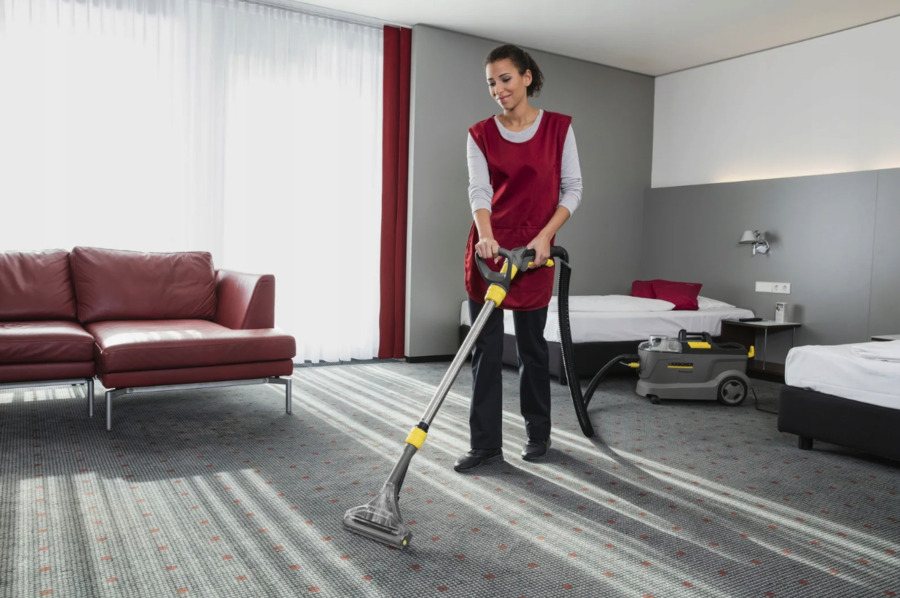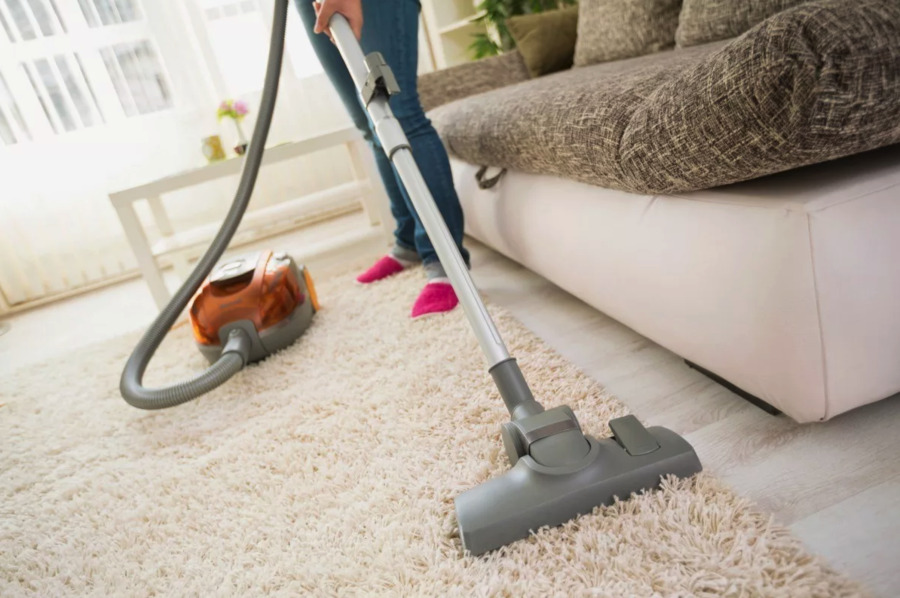A vacuum cleaner is an electrical appliance designed to create a partial vacuum using an air pump to suck up dust, dirt, and other small particles from various surfaces. Its main components include a motor that provides suction power; a filtration system that traps the removed particles, preventing them from re-entering the air; and a dust collection system, usually a bag or container where the collected debris is stored until disposal. Vacuum cleaners are indispensable in residential, commercial and industrial environments, they not only provide routine cleaning but also improve overall environmental hygiene by reducing the number of potential allergens and pathogens in living spaces.Not surprisingly, vacuum cleaners are sold in a huge range all over the world and are also offered by cleaning equipment suppliers in UAE
History of the Vacuum Cleaner
The vacuum cleaner’s journey from a cumbersome piece of equipment to a sleek, versatile cleaning tool spans more than a century. The initial concept of a vacuum cleaner can be traced back to the 19th century with manual models that were labor-intensive and inefficient. Hubert Cecil Booth introduced the first powered vacuum cleaner in 1901, which was so large that it had to be transported by horses and used hoses inserted through windows to clean buildings. William Hoover later refined this design to the portable electric models that became a staple in households worldwide. Over the decades, technological advancements have led to the development of various types, including bagless, handheld, and robotic vacuum cleaners, significantly diversifying the ways in which vacuuming could be integrated into regular cleaning routines.

The Role of Vacuum Cleaners in Human Life
Vacuum cleaners are more than just cleaning appliances; they are integral to maintaining health and hygiene in indoor environments. They effectively remove dirt and dust that accumulate on floors, carpets, and other surfaces, including allergens like pollen, pet dander, and dust mites. This is particularly vital for individuals with allergies or respiratory conditions who are sensitive to airborne particulates. Moreover, in environments like hospitals and schools, where cleanliness is paramount to prevent the spread of disease, vacuum cleaners play a critical role in ensuring these spaces are free from dust and debris that could harbor harmful bacteria or viruses.
Types of Vacuum Cleaners
– Classic Floor Vacuum Cleaner for Dry Cleaning: These traditional models are suitable for a variety of floorings and are praised for their robustness and effectiveness in removing dirt from carpets and hardwood floors. They typically include a set of accessories, such as different nozzles for various cleaning tasks.
– Vertical Vacuum Cleaner: These are designed with convenience in mind, ideal for quick clean-ups and smaller areas. Their upright design is particularly favored in settings where storage space is limited, and they often feature settings that allow for easy transition between carpet and hard flooring.
– Robot Vacuum Cleaner: Autonomous and efficient, robot vacuum cleaners operate with minimal human intervention. They can be programmed to clean at specific times and are capable of navigating around furniture and obstacles, making them perfect for maintaining daily cleanliness with little effort.
– Portable Vacuum Cleaner: Compact and lightweight, these cleaners are perfect for spot cleaning and reaching areas that are difficult to access with larger models, such as car interiors and upholstery.
– Washing Vacuum Cleaner: These units go beyond mere vacuuming to offer washing capabilities, injecting water and cleaning solution into the carpet and extracting the dirty mixture, which makes them ideal for deep cleaning tasks.
Industrial Vacuum Cleaners
Industrial vacuum cleaners are engineered to meet the demanding requirements of large-scale operations. These machines are robust, capable of handling not just dirt and debris but also hazardous substances like chemicals and heavy materials. They are indispensable in environments like factories, warehouses, and large commercial buildings, where regular vacuum cleaners would be inadequate. Their design focuses on durability and performance, with features that accommodate continuous operation and the ability to handle significant amounts of waste efficiently.
Main Characteristics of Industrial Vacuum Cleaners
– Power: These cleaners are equipped with high-powered motors that provide the suction necessary to handle large volumes of dirt and debris quickly and effectively.
– Tank Volume: Large tank capacities are essential for industrial vacuum cleaners as they allow for extended operation without frequent emptying, which is crucial in industrial settings.
– Type of Dust Collector: Industrial models may use large, reinforced bags or cyclonic filters to manage the volume and type of waste collected. Some models also include HEPA filters to trap extremely fine particles, making them suitable for environments where air purity is critical.

The Role of Industrial Vacuum Cleaners in the Modern World
Industrial vacuum cleaners are pivotal in maintaining the cleanliness and operational efficiency of various industrial settings. Their ability to rapidly clean large areas and manage waste effectively helps in maintaining not only cleanliness but also safety in workplaces. They are particularly crucial in industries where dust and debris can pose significant health risks or where precision and cleanliness are essential for the quality of the products produced.
Leading Manufacturers of Industrial Vacuum Cleaners
Manufacturers like Nilfisk, Kärcher, Dyson, and Hoover lead the market in the production of industrial vacuum cleaners. These companies are at the forefront of integrating innovative technologies that enhance the efficiency and usability of their products, catering to a wide range of industrial needs.
Usage of Industrial Vacuum Cleaners in the UAE
In the UAE, the demand for industrial vacuum cleaners is driven by the region’s extensive construction activities, burgeoning hospitality sector, and stringent hygiene standards. The deployment of these cleaners is critical in maintaining the high standards of cleanliness expected in the country’s public spaces, commercial establishments, and industrial sectors, underscoring their essential role in the region’s operational and public health infrastructure.
End Note
In summary, vacuum cleaners, from household variants to sophisticated industrial models, are indispensable tools in the arsenal of modern hygiene management. Their continued evolution and adaptation to meet a variety of cleaning needs underscore their integral role in today’s society.

I am an accomplished coder and programmer, and I enjoy using my skills to contribute to the exciting technological advances that happen every day.
